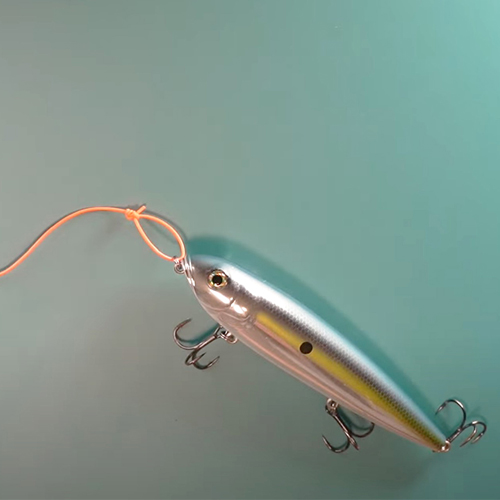How To Catch Catfish
Catfish are great fun to catch and the rigs can be rather simple. Here are some effective methods to catch these strong fish.
How to Catch Catfish: Basics
Catfish are one of the most popular fish in the U.S. for several reasons. For one, they are found in nearly every state, giving anglers plenty of opportunities to learn how to fish for “catfish.” Some of the 49 species found in North America can easily reach double digit weights, they are almost always hungry, and most can make a drag on a fishing reel sing. The potential fillets are a delectable bonus.
Because they are exclusively freshwater fish, you can only learn how to catch catfish in rivers, ponds and lakes. Check out the following catfish fishing tips to maximize your chances of landing these delicious fish.
Catfish Fishing Rigs
When learning how to catch fish know that most non-commercial catfish fishing rigs are designed to accommodate still fishing, the most common way of fishing for catfish, making the simplest rig of all a just a pole with a hook. However, for those anglers with reels to work with, here are some of the most popular setups.
Drift Rig
For better bait placement and casting distance, consider using a drift rig. Simply pinch 1 to 2 lead shots (depending on the strength of the current) on the line 6 to 12 inches above the hook baited with fresh cutbait. This rig also is also preferred for drifting across shallow flats in lakes, ponds, or reservoirs.
Slipfloat Rig
More sensitive than traditional round bobbers, slipfloats allow catfish to swim short distances with bait without feeling much resistance. Before attaching the hook, tie a Uni knot around your main line with the same (or slightly heavier) line to serve as an adjustable float stop. Next, add a 5-mm bead to the line followed by the slipfloat. Finally, add a few lead shots approximately a foot above the hook to anchor cutbait.
Slip Rig
The egg sinker slip rig is, hands down, the most popular rig for still fishing catfish. Consisting of an egg sinker on the main line held in place above the hook by a lead shot, this rig is ideal for keeping the bait near the bottom, which in turn, allows a catfish to swim off with the bait with little tension. Unfortunately, despite the popularity of this rig, it may not always be the most effective. This is mainly due to the egg sinker itself which has a tendency to snag as it rolls along the bottom when cast across current.
Poly Ball Rig
Also called the English poly ball rig, this setup keeps your bait anchored in place, but off the bottom. This is an especially effective technique for anglers using live bait that need to maintain the appearance of swimming. It’s also a good method for keeping dead bait and lures suspended above bottom debris. Follow the instructions for creating the slipfloat rig and add a 1- to 2-inch styrofoam (poly) ball on the leader.
Three-Way Rig
The three-way (or Wolf River rig) is an ideal rig for slipdrifting on big rivers like the Mississippi, Colorado or Missouri and for drifting wind-blown flats in large reservoirs like Santee Cooper. The three-way rig consists of a 2- to 3-feet leader and a 6- to 24-inch dropline anchored by a bell sinker. While a half-ounce sinker may be enough for still water, one up to 8 ounces may be needed to drift around the tips of dams for blue and channel catfish.
Paternoster Rigs
Think “three-way slip rig” and you’ve described a paternoster rig, favored by anglers using live baitfish in search of flatheads. Start with a terminal leader made from a foot-long section of monofilament with a hook on one end and a barrel swivel on the other. Next, create a lead dropper made from a lighter piece of monofilament with a bell sinker on one end and a swivel on the other. Tie the leader to your main line and thread the dropper swivel so it slides above the leader swivel. These rigs work best when anglers can maintain a 30- to 90-degree angle on the line, from rod tip to sinker.
Float Paternoster Rig
Angling for big catfish? This rig is a great choice for placing large live bait in the lair of large catfish and waiting them out. Create a slipknot as noted above—uni knot, bead, slipfloat—then add the leader consisting of a lead dropper and bead. Adjust your floatstop so that it allows the bait to swim in a big circle off to the side. Remember, bait that is loosely tethered tend to swim more vigorously.
How to Catch Catfish: More Tips and Tricks
-
Lures: While some anglers have success using lures, most catfish anglers prefer to use live bait. Minnows, cut baitfish, liver, grasshoppers, night crawlers, or even hotdogs or cheese work great for bullheads and channel catfish. Blue catfish and flatheads prefer live sunfish or shad.
-
Hooks: A treble hook may be better for holding bait such as liver or cheese, but a circle hook is effective for practicing catch and release.
-
Patience: Check your regulations and cast out another rod of two if it is allowed. Use rod holders with the drag set light at first, so the rod doesn’t suddenly disappear into the lake, and then place it on a comfortable rock and be ready.
-
When to Fish: Channel catfish are known for prowling shallows at night from late spring through early fall. But don’t let that deter you from trying in the daytime. The great thing about this popular fish is the fact that they’re almost always hungry and more than willing to feed throughout the day as well.
Are you ready to join the growing list of anglers catching North America’s most popular species? If so, grab some gear, pick up a fishing license and join the fun!
KEEP LEARNING

How to Tie the Non-Slip Loop Knot
The non-slip loop knot is a popular and reliable choice for securing hooks, lures, and other tackle to your fishing line.
LEARN MORE

Socials
Take me fishing social media links
LEARN MORE

TakeMeFishing x Teen Vogue
Join us on a creative journey as fashion designer Ahmrii Johnson walks us through her collaborative vision and process with Teen Vogue and fashion brand, Rentrayage, to create a special piece.
LEARN MORE


.png?lang=en-US&ext=.png)